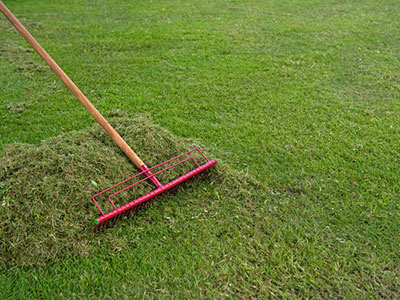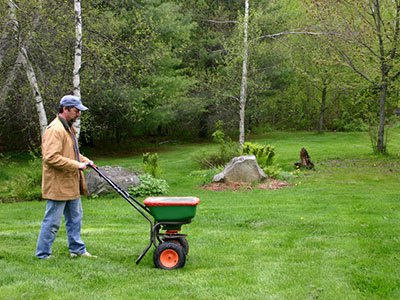How to give your grass the head start it needs to thrive all summer
In warmer months, our lawns are where we spend a lot of our lives. Hopefully, that time is spent lounging or playing rather than weeding, mowing and watering. “Grass is a really high-needs plant,” says NAIT landscape gardener Dan Tavenier, who specializes in turf.
Investing time and effort early in the season, however, can help ensure healthiness that will not only keep your lawn looking great all season but also limit the amount of work needed to make it a pleasant place to while away a summer afternoon.
Here are Tavenier’s 6 tips for successfully resuscitating your turf.
1. Keep off the grass
“The kids will probably hate me for saying it,” says Tavenier, “but stay off your lawn until it’s reasonably dry.” When wet, turf is most at risk of compaction that decreases drainage and gas exchange. Even if underground, roots need to breathe. If the ground feels “squishy” it’s not ready to be regularly walked across.
2. Delay spring clean-up
To prevent damage and make the most of your effort, wait until the frost is completely out of the ground before tidying up. Tavenier suggests to “stagger your clean-up.” Deal with thawed, south-facing parts of the yard before tackling those north facing.
 3. Take out the thatch
3. Take out the thatch
Old grass, or thatch, accumulates like a carpet around the base of the lawn. When it gets too thick, it blocks water and gas exchange. “It also becomes a really good environment for insects,” says Tavenier. It needs to be there to protect roots, but it shouldn’t be more than a centimeter thick.
Tavenier doesn’t recommend a power-rake attachment for your mower. They usually can’t be set high enough to prevent damage to plant crowns, which is where growth originates. What’s more, they’ll likely overwork your mower.
“I use a hard rake,” says Tavenier, who recommends the bow variety. “And it’s a good way to spend a nice spring day outside.”
Don’t overdo it. “If you’re dethatching and bringing up a lot of soil, you’re going too deep.”
4. Get patching
Spring is a great time to repair the lawn, whether the damage is from pets, ice that lingered too long or other minor turf tragedies. Patch kits from the hardware store work fine, says Tavenier. So does mixed seed covered with a light layer of soil, lightly compressed. Don’t let it dry out and don’t apply herbicide until you’ve mowed the area a couple of times.
 5. Go easy on the water and fertilizer
5. Go easy on the water and fertilizer
Soil temperature needs to reach 10 to 12 C before grass begins to actively grow. Irrigating with cold water can set the lawn back (some major golf courses, Tavenier points out, will warm their spring irrigation system if necessary).
Liquid fertilizer can have the same effect. It may also run off unused if the grass isn’t growing yet. Same goes for granular if it dissolves.
When the time is right, Tavenier applies the latter form (4:1:2) all season long. He waits until he sees active growth before applying the first dose, which is ¼ of what he’ll apply all year (half goes on in the summer, ¼ in the fall).
6. Mow, mow, mow your lawn
Set your first cut to 2.5 to 4 cm (1 to 1.5 inches) tall, to cut off dead blades, allow the soil to warm more quickly and promote growth. (As the season progresses, let it grow longer. By summer, keep it 5 to 7.5 cm (2 to 3 inches) tall. This may require mowing more than once a week.)
Sharpen your blade – but wait until after the first cut. During that initial pass, your mower is sucking up dust and dirt than can dull its edge, says Tavenier. Proper sharpening makes for clean cuts that discourage disease and prevent yellowing that comes from frayed edges. And, adds Tavenier, as he looks forward to a season filled with lush, green grass, “it’s easier on your mower.”
Aerate – spring or fall?
Tavenier prefers to aerate in the fall so the ground is ready to absorb the spring melt. If not, mid-spring will do. “The best practice is to aerate while it’s actively growing,” he says. That way, the lawn will recover more quickly from the damage aerating does to crowns, from which the blades grow.
Aim for depth of 5 to 7.5 cm (2 to 3 inches) on flat ground. Go deeper on slopes that otherwise encourage runoff. If necessary, water before aerating to make the ground easier to penetrate.